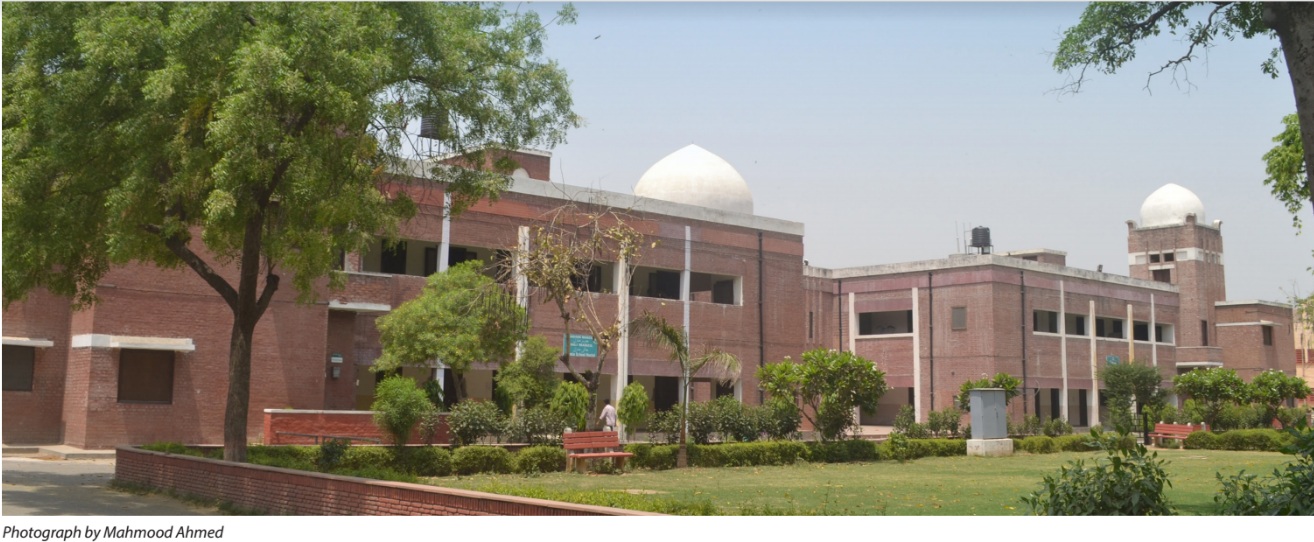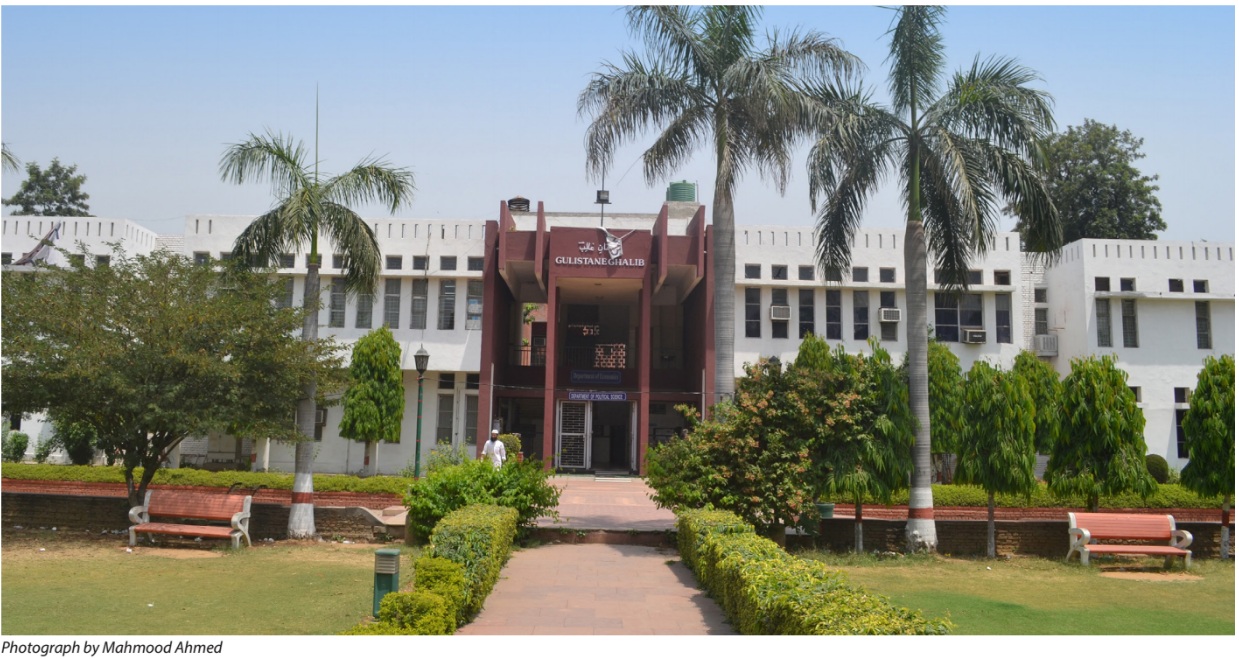
The technical answer to the question raised in the title may be that one who has studied or worked in Jamia Millia Islamia is a Jamia-ite. However, perhaps the best identity of a Jamia-ite is that he shows the social qualities that carry forward the legacy of the early builders and students of Jamia. It is so because those people translated into practice the ideals and the expectations of the founders and supporters of Jamia.
Jamia was and is an educational institution, and so the focus on, and importance of, education cannot be over-emphasised. But what is it that sets Jamia apart from other educational institutions? It was born out of revolt in the field of education – that was perhaps not less but more significant, and surely more successful, than our revolt of 1857! It was a revolt against the forces of status-quo; a rebellion for collective progress, for integrating education with the whole life and until the last breath; for involving students with the surrounding community, making them active participants in, and not mere recipient of, education; situating their education in the larger context of the country’s struggle for freedom and the international scenario.
For the given space and time – that is for the level of development of productive forces and resources and means of communication available to our society in 1920s – the spirit of Jamia was revolutionary and international; at the same time, it was rooted in the humane native culture!
In the present context, with regard to education, the three important questions are:
i.What is the objective of education?
ii.What should be the medium of instruction?
iii.What all should be included in the curriculum?
The objective of education
The fact that the founding of Jamia was a response to the call by the leaders of India’s freedom struggle, led by none else than the father of the nation, Mahatma Gandhi, suggests that Jamia’s objective of education was in harmony with the objective of India’s freedom struggle. In other words, Jamia has had progressive orientation and broadest possible meaning of education– one that is closely linked with the life of the nation, i.e., the people-at-large.
It is significant that despite having no assured source of maintenance, a group of people that comprised all sections – teachers, students and non-teachingpersonnel – left the ‘stable or comfortable’ Aligarh Muslim University, and became first Jamia-ites!That means they made personal sacrifice for the larger good of the society. And for quite a long time, the succeeding generations of Jamia-itesmaintained this legacy to a considerable extent.

The builders of Jamia considered education – not a means to get a job but – an aid in leading a meaningful life that understands society as an integrated entity, strives for an ultimate society that believes in the collective good and is best summed up as “from one according to ability, to each according to need”.
I think the meaning and purpose of education is best explained by “Jamia Kaa taraanaa”. Every aspect and activity of our life, in thoughts and actions both, should reflect it. And the statue of Ghalib was, in my view, installed in Jamia because his Urdu poetry best represents the ethos of Jamia!
The objective of education is to always struggle – against ignorance, discrimination, disparities, stagnation, in short against anything and everything that divides the people and checks progress. In other words, education should lead to lessening of the societal contradictions or discriminations.
In the common struggle for the forward movement of Jamia, a Jamia-ite’s personal narrowness – in any socially divisive respect, be that of region, religion, sect, caste, creed, gender, economic status, or any other – is left behind! And consequently, equality, justice, and societal harmony become the watchwords.
The inclusive view of life makes a Jamia-ite humble, humane, honest, sincere, hard working and kind; and even his/her worst ideological critics acknowledge his/her integrity, fervour, zeal and feeling for the people-at-large especially the disadvantaged and the discriminated. He is respected because s/he identifies not only with fellow Jamia-ites but with all.
I will end the objective of education with the second line of the verse that is written below the statue of Ghalib installed in jamia Millia Islamia:
kis kaa dil hoon keh do-aalam sey lagaayaa hai mujhey
(Whose heart I am, that I am attached with the universe)

The medium of instruction
The school education needs to be imparted through the mother tongue. It is an established fact that the child learns best through his mother tongue. And, even in the present scenario – where rapid advancements resulting in the need for specialized education have taken place– at least at the primary stage, teaching through mother tongue needs to be compulsory and depending upon the concrete situation, the transition in case of the medium of instruction to an international language can take place. And, higher teaching, i.e., at the college level, where the student needs to be exposed to an international level of specialized education, the teaching needs to be through an international language.
The Jamia experiment had resulted in the evolution of the progressive three-language formula, where every child learns a minimum of three languages: mother tongue, the regional/ national language and the international language (English).
The curriculum
The curriculum needs to be regularly updated because it has to keep pace with the continually evolving life; and the same is stressed by the following lines of our taraanaa:
yeh bazm-e dil hai, yahaan kee salaa-ey aam naei
(This is an assembly of hearts; here the clarion call is new/different)safar hai deen yahaan, kufr hai qayaam yahaan
(Here the incessant journey is the faith and stagnation is impermissible)yahaan peh tashnah labee mai-kashee kaa haasil hai
(Here, the result of drinking wine is greater thirst)
In the early phase, the special features of the Jamia’s school curriculum included the following
- Relevance to the lives and culture of the recipients.
- Focus on character building by placing premium on morals – such as punctuality, sincerity, hard work, responsibility, respect, empathy, honesty and integrity– through practice.
- Emphasis on complete education by incorporating general craft (at primary level) and wood craft, metal craft, gardening, agriculture, and home science in the secondary school curriculum.
- Emphasis onco-curricularactivities, such as morning assembly, games, drama, music, poetry recitation, observance of ‘Qaumi Hafta’ (resulting in ‘One-day School’), one-week ‘Open-air school’, ‘Taleemee Mela’, and educational tour.
- School students’ involvement in the running of the school’s canteen, library, bank, stationary shop and a small zoo.
- Close interaction amongst allJamia-itesand with the neighbourhood, thereby broadening the horizon and inculcating community feeling.
- Extending camaraderie to the national and international level, not only through teachings and above interaction but also other practices such as that of inviting dignitaries like Jawahar Lal Nehru and Frontier Gandhi and entrusting students the responsibility of conducting the programme and showing the school to a visiting dignitary, and by adopting orphans (of a so- called communal violence).
Inshort, the curriculum wasdesigned withthe objectives of education discussed above as the guiding principles. The improvisations and collective input were the norm and the mutual love and respect and the feeling of a wholesome and satisfying life were the rewards.
To conclude
One sees that in response to the call from the leaders of freedom struggle Jamia was founded by severing from AMU and it charted a new course full of uncertainties and difficulties. In addition, one notes the best human qualities and unison of words and deeds exemplified by early Jamia-ites and best inheritors of Jamia’s legacy. In short, a Jamia-ite can be best recognised by his/ her readiness to sacrifice for the larger good of the society – because of his/ her love for the people. To quote Ghalib:
ishq sey tabeeat ney zeest kaa mazaa paayaa
dard kee dawaa paaei, dard-e bey-dawaa paayaa(From love, the disposition got the taste of life.
Found the cure for pain, and a pain without cure)
Read Same article in Hindi: जामई कौन
(Written by Mr. Ghizal Mahdi, a senior alumnus of Jamia Millia Islamia and President, JMIAA)
